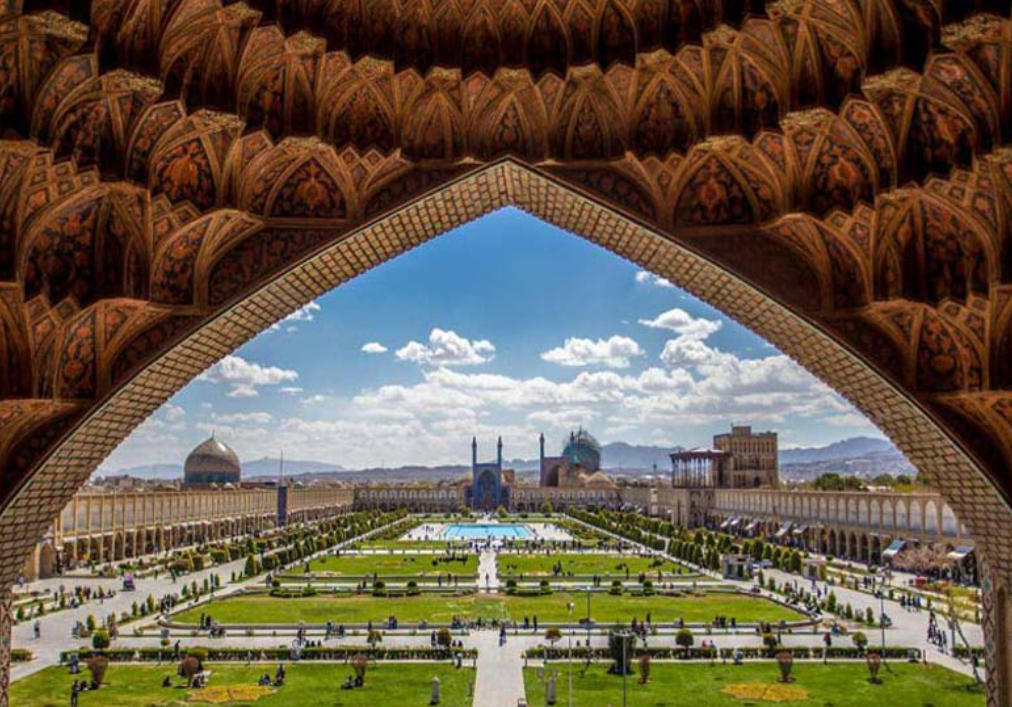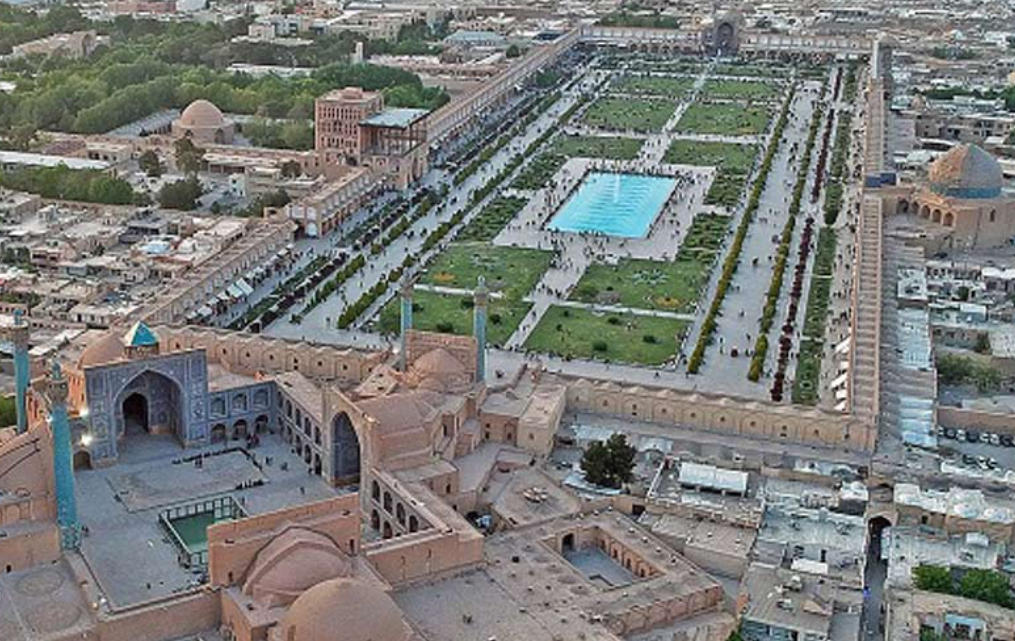What is so special about Naqsh-e Jahan Square?
As one journeys through the annals of history, few sites leave as indelible a mark on the human psyche as the grand squares and plazas that have served as the epicenters of cultural, political, and social activity. Among these squares, Naqsh-e Jahan Square in Isfahan, Iran stands out not only for its grandeur and architectural splendor but also for its rich historical context.

Meaning of Naqsh-e Jahan Square
The name “Naqsh-e Jahan” translates to “Pattern of the World.” This moniker is not merely decorative but speaks volumes about the aspirations of its builders. Envisioned as a microcosm of the earth, this square was a reflection of the Persian realm’s vastness, power, and grandeur during the Safavid dynasty. It was meant to symbolize the very epitome of civilization during its time, reflecting both the terrestrial dominion and celestial grandiosity. Its sheer size, at 560 meters by 160 meters, makes it one of the largest squares in the world, and its monumental structures surrounding it ensure that it’s not just vast in size but also in its cultural and architectural significance.

Architectural Grandeur and Spatial Layout
The uniqueness of Naqsh-e Jahan Square is inextricably tied to its harmonious architectural layout, reflective of the Persian and Islamic aesthetics of the time. The square is surrounded by some of the most iconic structures of Persian architecture:
- Shah Mosque (Imam Mosque): On the south side stands the majestic Shah Mosque with its towering minarets and brilliant blue tiles, a masterpiece of Persian architecture and a symbol of the Safavid dynasty’s grandeur. Its portal, adorned with intricate calligraphy and mosaic work, opens up into a sanctuary that has left countless visitors in awe.
- Sheikh Lotfollah Mosque: On the eastern side, the Sheikh Lotfollah Mosque provides a counterpoint with its smaller, yet exquisitely detailed dome and a harmonious blend of azure and golden hues. This mosque, unlike others, lacks a minaret and a courtyard, emphasizing its private nature.
- Ali Qapu Palace: Opposite Sheikh Lotfollah Mosque, on the western side, stands the six-story Ali Qapu Palace. It was not only a residence but also a place of governance. Its elevated terrace offers a panoramic view of the square, and its music room, with its unique acoustic features, is an architectural marvel.
Isfahan Grand Bazaar: Running along the northern side, the Grand Bazaar is a bustling maze of commerce, where the sounds, scents, and sights provide a sensory overload, reminiscent of the ancient Silk Road days.

Historical Context and Cultural Significance
Naqsh-e Jahan Square was not just a masterpiece of town planning and architecture but also the heart of the Safavid dynasty’s political and religious life. Commissioned by Shah Abbas I in the late 16th century, the square transformed the city of Isfahan, making it the capital and the heart of the Safavid empire. It reflected a vision that merged the temporal and the spiritual. By positioning two of the most magnificent mosques alongside a palace and a bazaar, Shah Abbas I sought to highlight both the divine and the worldly.
Moreover, this square was not merely an ornate showpiece. It played host to polo matches, military parades, and royal ceremonies. Its vast expanse provided room for public gatherings, while its bazaar ensured that it remained vibrant and bustling with economic activity. It can be said that Naqsh-e Jahan Square was the pulse of Isfahan and, by extension, the Safavid empire.
Today, it stands not just as a testament to a bygone era but as a living, breathing entity. Declared a UNESCO World Heritage Site in 1979, it continues to draw tourists and locals alike, providing a glimpse into the grandeur of the Persian Empire while continuing to serve as a hub of social and cultural activity.
In conclusion, Naqsh-e Jahan Square’s allure lies in its seamless blend of architectural brilliance, historical richness, and cultural vibrancy. It stands as a testament to the zenith of Persian art and architecture and remains one of the most breathtaking sites in the world. It not only provides a glimpse into the illustrious past of the Safavid dynasty but continues to be a vibrant hub, echoing the sounds, colors, and patterns of the world it was named after.
Answers to the Questions:
1 – What is the meaning of Naqsh-e Jahan Square?
The meaning of “Naqsh-e Jahan Square” is “Pattern of the World.”
2 – Who built Naqsh-e Jahan Square?
Naqsh-e Jahan Square was built by Shah Abbas I during the Safavid dynasty.
Naqsh-e Jahan Square is located in Isfahan, Iran.


